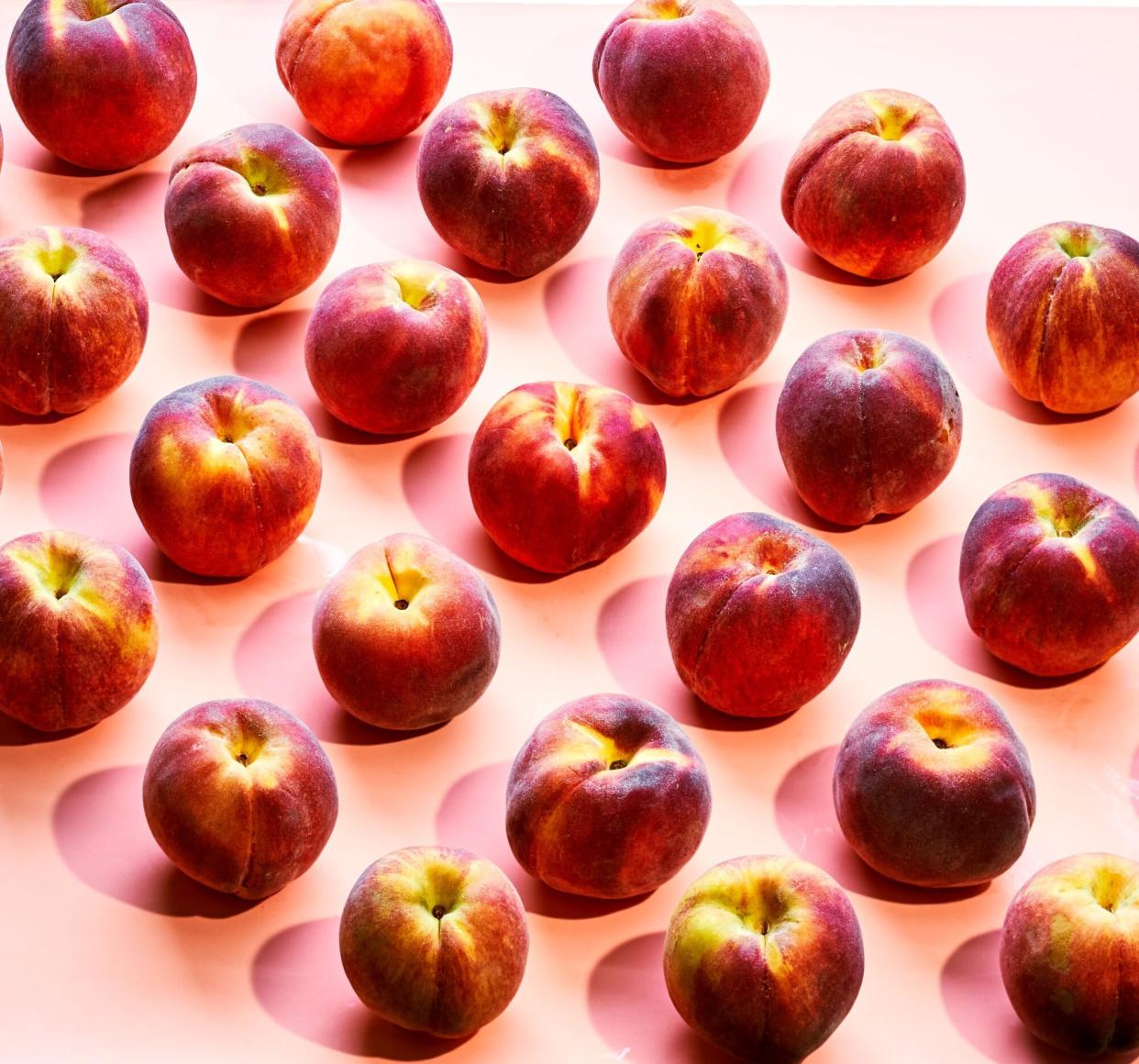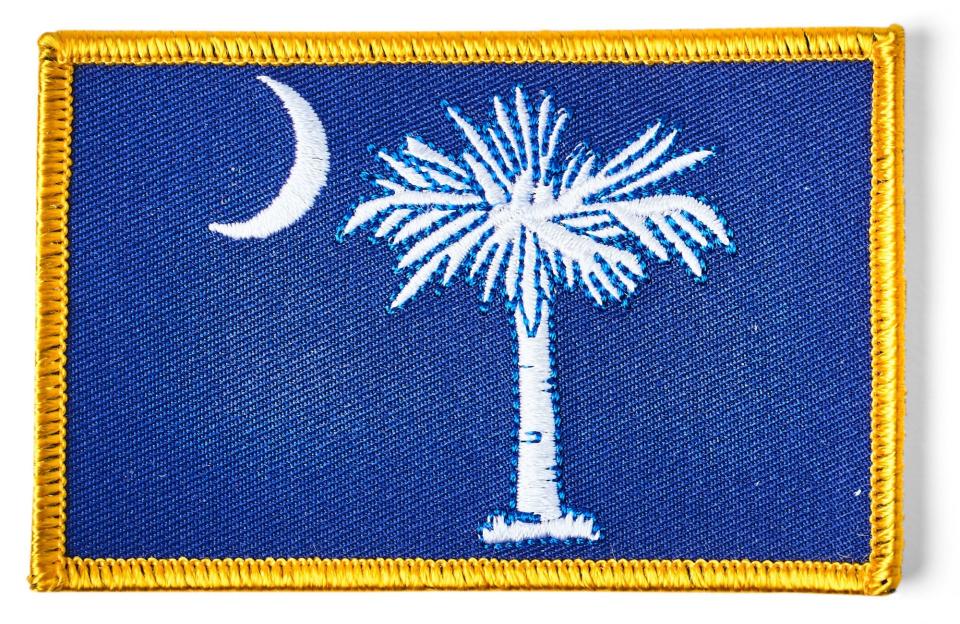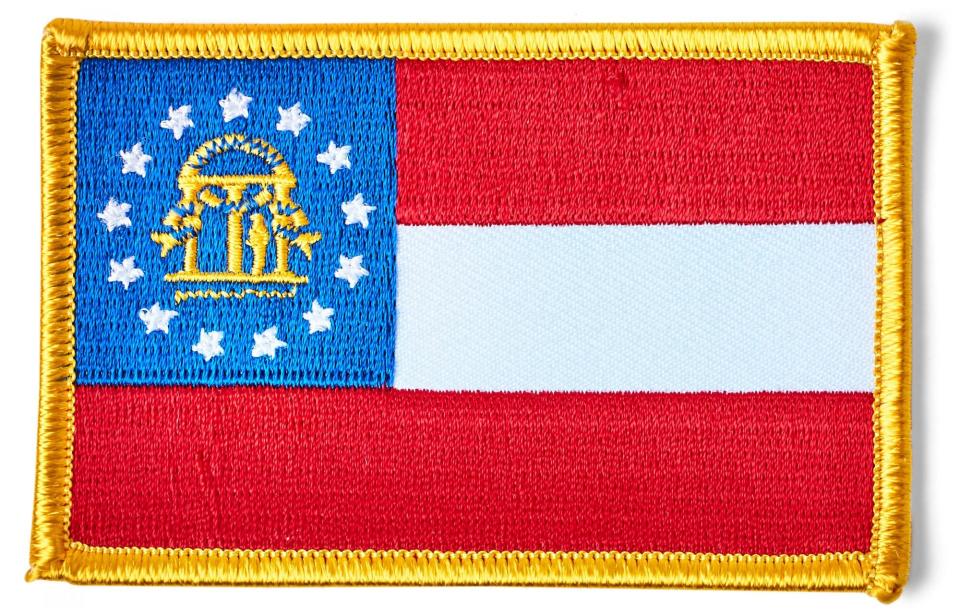Which Is the True Peach State?

Victor Protasio; Food Styling: Chelsea Zimmer; Prop Styling: Buffy Hargett Miller
If you want to see the most powerful way that people from the same region can be locked in a perpetual argument with one another, you should bring up peaches.
Yes, I know about intense college-football rivalries. I also happen to live in between Duke University and The University of North Carolina at Chapel Hill, so I'm very familiar with the basketball ones. But if you think you've seen pride of place, it's even more intense when a South Carolinian meets up with a Georgian while there's a peach pie in the oven.
Petty rivalries aside, real battles over fruit science, soil mineral content, degrees of sweetness, and economic well-being come to the fore along with faded recipe cards, weather charts, and almanacs. This has been going on for at least 100 years, and in the end, the fruit is what's at stake.
The ideal peach is juicy, sweet, free of bruises, and at peak ripeness. It should be fragrant (but not too fragrant, or it's going to rot) and neither rock-hard nor soft enough for your thumb to make an imprint. From there, though, it's up for debate.
So we let three of the South's top peach states—South Carolina, Georgia, and Texas—duke it out. Apologies to other producers like Alabama, Tennessee, New Jersey, and California. We await your comments.

South Carolina
We've got the science
The truth about a peach tree is that it lives only about 10 years, 20 if you're lucky. Today's popular selection could soon give way to tomorrow's newer, juicier, hardier, and more flavorful variety—especially when scientists at major state-funded university agricultural programs (like at Clemson University) are involved in developing new kinds all the time. Thanks to this group, South Carolina had overtaken Georgia by the late 20th century as the biggest peach-producing state in the region.
The Peach Team in the College of Agriculture, Forestry and Life Sciences at Clemson says that while Georgia may be called the Peach State, South Carolina should be known as "The Tastier Peach State." This oft-repeated taunt—circulated all over Twitter and other social media—was first popularized in 2011 by Desmond R. Layne, a former peach specialist at Clemson. He should know; his father was a peach breeder for Agriculture Canada, and his first job was picking the fruit for his dad. Layne loves all South Carolina peaches, especially the 'Winblo' variety. "It has a perfect creamy, melting texture and a fabulous blend of sugar and acidity," he says.
The town of Gaffney, South Carolina, even has its own peach statue, a 135-foot water tower that anyone traveling on I-85 through the state can tell you looms large. The Peachoid, as it has come to be known, was built in 1981 and holds 1 million gallons of water. When it was repainted in 2015, Claire Huminski, Gaffney's then communications intern, said that it became a cause of national concern.
"We have actually had a lot of people complain to us via social media and call to say that we are taking down the Peachoid and that we do not need to do that because it is a landmark," Huminski said at the time. "They were really upset, tweeting angry tweets at me. I'm like, 'We're not taking it down! I promise!'"

Georgia
We've got the history
Peach farmers in Georgia claim that time is on their side, and they're not wrong: This state has been growing peaches commercially for longer than any other. A farmer named Raphael Moses was among the first to ship the fruit in 1851. Because fresh peaches have delicate skin, he nestled them in Champagne boxes to help preserve their flavor and texture (a technique that's still used for shipping fine fruit).
It was not until the late 19th century, though, that the Georgia peach gained its fame. Samuel H. Rumph, another farmer, helped things along: In 1870 in Macon County, he grafted a Chinese peach variety onto another tree and named the large, juicy, yellow-fleshed result after his wife, Elberta. This kind was not only tender and sweet but also hardy and produced abundantly.
By the late 1800s, the Elberta was being shipped to markets up and down the East Coast. In the process, it became so valuable that it helped fund the expansion of the Georgia Southern Railway line. The fruit became synonymous with Georgia and, over the years, landed on the state quarter and license plates. Any native Atlantan can reel off the city's dozens of streets with "Peachtree" in their names.
Sadly for Georgians, in the 1960s the Elberta lost ground to more disease-resistant peaches. Today you'll be hard-pressed to find this one in a supermarket, though local farmers have carried on admirably with popular varieties including 'Belle of Georgia' and 'Rich Lady.'
And they admit no defeat. "Our peaches are the best because they are grown with love and a lot of TLC, and they're also sweeter," says Tisa Horton, director of the Georgia Peach Festival. This 36-year-old event is held in early June, peak harvest season in towns like Fort Valley and Byron in the aptly named Peach County. "We want to honor area farmers, local agriculture, and Georgia's nationwide contribution to the food industry," she says.
One of Horton's favorite dishes ever served at the festival was the peach-rum dumplings from chef Scottie Johnson of Blessed & Highly Flavored Cuisine in the nearby town of Kathleen, around 100 miles southeast of Atlanta. Even with flaky dough and a buttery sauce, the flavor of the peaches still shines through in his recipe.
Johnson says, "My dumplings are awesome because our Georgia peaches are just so fresh. I get them from Lane Southern Orchards right here in Fort Valley. They're firm and just the tastiest ones in the whole world."

Texas
We've got presidential approval
Peaches made their way to Texas in the late 1840s courtesy of German settlers. Those early farmers found the Hill Country's climate, altitude, and calcium-rich soil well suited for the fruit trees. Texas peaches were little more than a local treasure, though, until they were popularized on the national stage by a man named Gilbert Onderdonk, a New Yorker who had moved to Texas on doctor's orders to improve his fragile health. He set up a nursery near Victoria and the Gulf of Mexico and became a respected horticulturist. Onderdonk developed numerous varieties of peaches adapted to the Texas climate. He even showed them off at the state's horticultural exhibit at the world's fair of 1904 in St. Louis and won the grand prize.
Commercial peach production in the Hill Country began in earnest in the early 1900s and has thrived ever since. Peaches are the leading fruit crop in Texas, and roughly 40% of those grown in the state come from Gillespie County, home to the towns of Fredericksburg and Stonewall.
Having two U.S. Presidents who cherished this region helped boost the reputation of its peaches. After Texans Lyndon B. and Lady Bird Johnson took up residence in the White House, they brought in their longtime cook, Zephyr Wright, whose repertoire of Southern staples had already made them popular hosts. In an official oral history of her White House years, the First Lady recalled entertaining at the "Texas White House" (now part of Lyndon B. Johnson National Historical Park) in the Hill Country: "In summertime, homemade peach ice cream was one of our favorites. Every year I would manage to get down to the farmers' market and buy several bushels of peaches. We'd have just loads of ice cream, fresh fruit, and corn on the cob."
Although George W. Bush was born in New Haven, Connecticut, he was raised in Texas from the age of 2 on. In 2001, he also brought peaches into the White House—most notably in his favorite dessert, a cream pie that First Lady Laura Bush shared in the cookbook Recipes from the President's Ranch: Food People Like To Eat. It's no wonder, since the family's beloved Prairie Chapel Ranch is in Crawford—where the Hill Country meets the Blackland Prairie.
So what makes these peaches so darn Presidential, anyway? They're known for being as juicy and sweet as this fruit can get but are also about as stubborn and strong-willed as any Texan. Some years see a boom in plantings and varieties, but you never know what you're going to get each season because of the weather. Locals say you can tell it's going to be a good year by how many peach stands, some no more than pickup trucks with signs hanging off the back, pop up along the highways in and around the Hill Country in mid-May.
The best of these have been run for decades by farmers and their families, like Gold Orchards (established in 1940) or Vogel Orchard, which started in the 1950s and is known for the Flameprince, a yellow-fleshed selection prized for its slight acidic tang.

